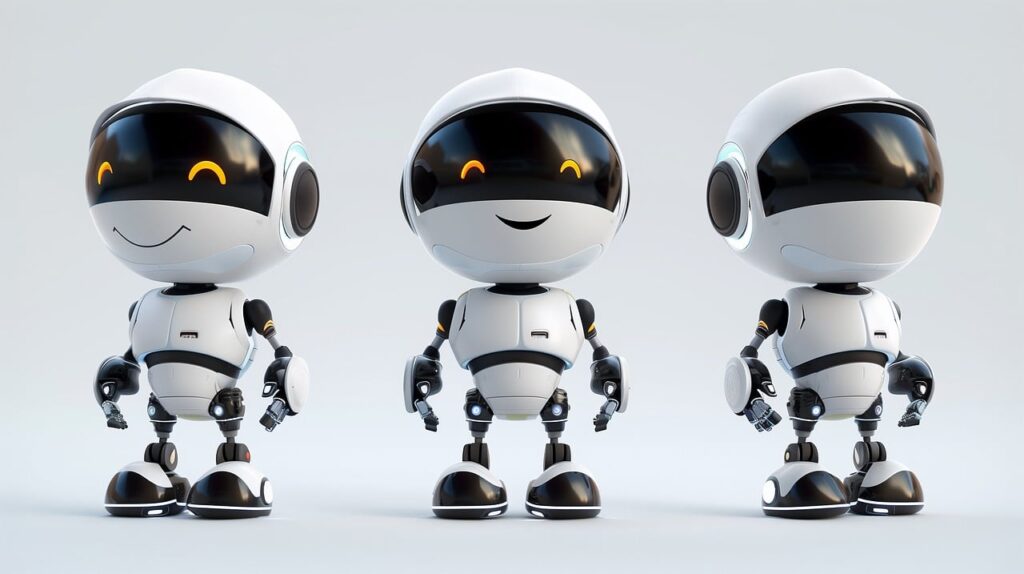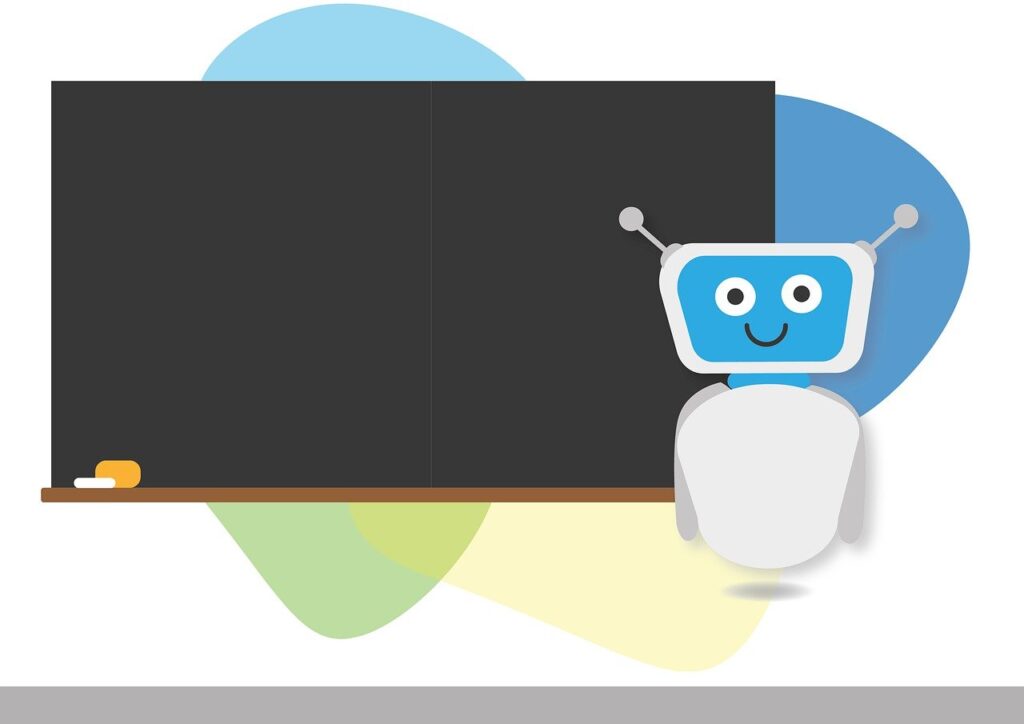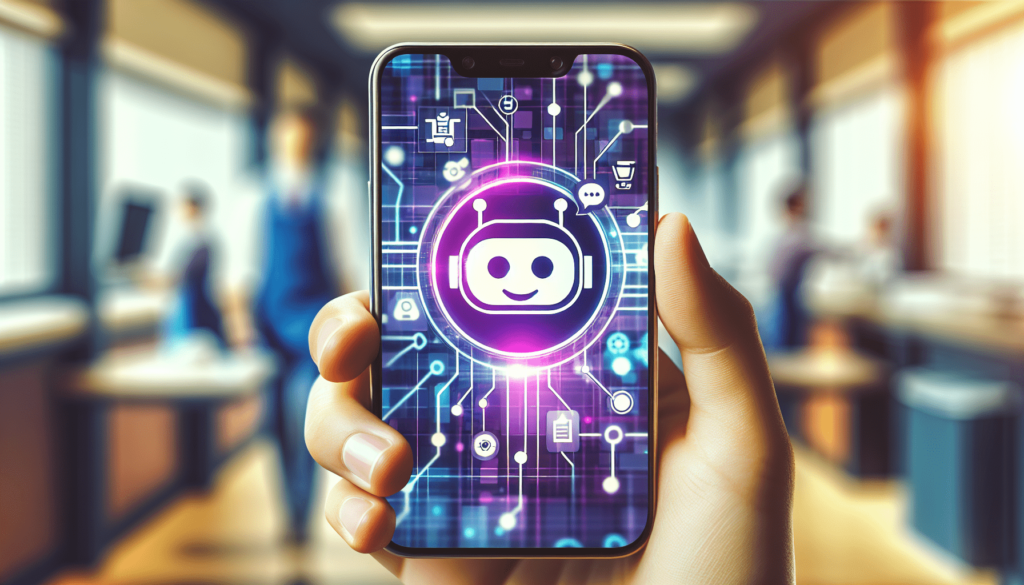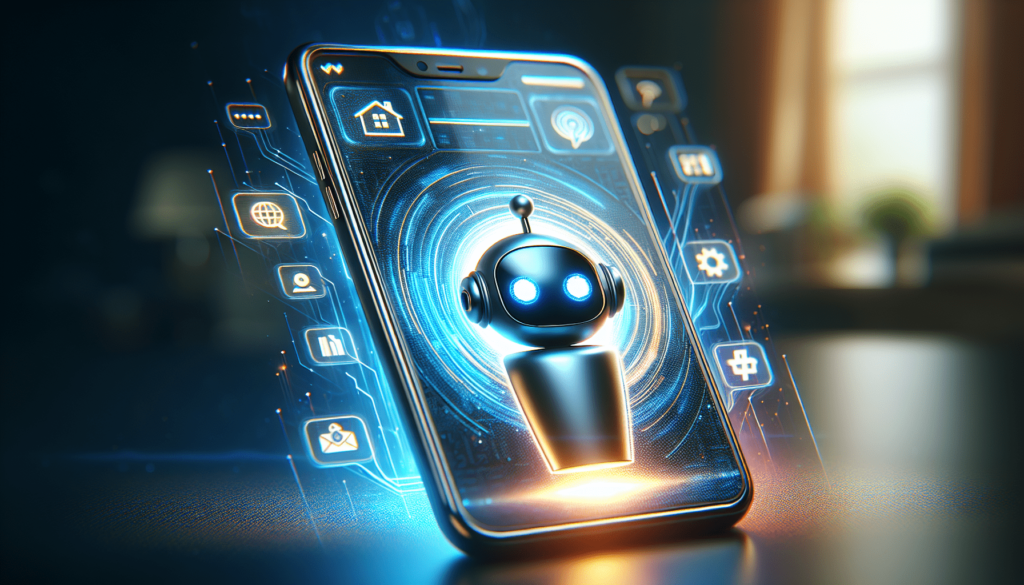Welcome to an exciting exploration of the impact of chatbot technology on the home service industry. As chatbots continue to evolve and improve, they are transforming the way home service businesses interact with their customers. These virtual assistants are revolutionizing customer service, streamlining communication, and increasing efficiency in the industry. Let's delve into how chatbots are reshaping the home service landscape for the better. Have you ever wondered how chatbot technology is revolutionizing the home service industry? Imagine being able to instantly book a plumber or schedule a house cleaning without even picking up the phone. Chatbots are changing the game when it comes to home maintenance and repair services. Let's delve into the impact of chatbot technology on the home service industry and how it's reshaping the way we approach household tasks.

What is a Chatbot?
In simple terms, a chatbot is a computer program designed to simulate conversation with human users, especially over the internet. These virtual assistants are powered by artificial intelligence (AI) algorithms that enable them to understand and respond to user queries in a human-like manner. Chatbots can be integrated into messaging platforms, websites, or mobile apps to provide instant customer support and streamline various business processes.
Chatbots are becoming increasingly prevalent in the service industry, including the home service sector, as companies strive to enhance customer experience and improve operational efficiency. By leveraging chatbot technology, home service providers can offer round-the-clock support, automate appointment scheduling, and deliver personalized recommendations to customers.
Why are Chatbots Important in the Home Service Industry?
Are you tired of waiting on hold to book a service appointment or having to navigate through a confusing automated phone system? Chatbots offer a solution to these common frustrations by providing a seamless and convenient way for customers to interact with home service companies. Whether you need to troubleshoot a problem, request a service quote, or track the status of a repair job, chatbots can handle it all with just a few clicks or messages.
In the home service industry, where timely responses and efficient service delivery are key factors in customer satisfaction, chatbots play a crucial role in streamlining communication and speeding up the service process. By integrating chatbot technology into their platforms, home service providers can enhance customer engagement, reduce response times, and increase operational productivity.
Benefits of Using Chatbots in the Home Service Industry
Let's explore some of the key benefits that chatbots bring to the home service industry and how they are transforming the way companies interact with customers and manage their operations.
24/7 Customer Support
One of the primary advantages of chatbots is their ability to provide round-the-clock customer support. Unlike traditional customer service channels that have limited operating hours, chatbots are available 24/7 to assist customers with their inquiries, issues, or service requests. This round-the-clock availability ensures that customers receive prompt assistance whenever they need it, leading to improved customer satisfaction and loyalty.
Imagine coming home late at night to discover a plumbing emergency – with a chatbot, you can quickly report the issue and schedule a service call without having to wait until the next business day. Chatbots empower customers to seek help at any time of the day or night, making the home service experience more convenient and hassle-free.
Instant Service Booking
Gone are the days of making phone calls or filling out lengthy online forms to schedule a service appointment. Chatbots enable customers to book services instantly through a simple conversation or form submission. Whether you need a technician to repair your HVAC system or a cleaner to spruce up your home, chatbots can handle the booking process efficiently and without any delays.
With chatbots, you can specify the type of service you require, choose a convenient time slot, and receive a confirmation of your appointment within minutes. This instant booking feature not only saves time for customers but also improves scheduling efficiency for home service providers. By automating the reservation process, chatbots help companies optimize their service capacity and allocate resources more effectively.
Personalized Recommendations
Another advantage of chatbots is their ability to deliver personalized recommendations based on customer preferences and past interactions. By analyzing user data and behavior patterns, chatbots can offer tailored suggestions, tips, or promotions that are relevant to each customer's needs and interests. This personalized approach enhances the overall customer experience and fosters a stronger bond between the customer and the service provider.
Imagine receiving customized maintenance tips for your appliances or exclusive discounts on recurring service packages – chatbots can deliver these personalized recommendations directly to your inbox or messaging app. By proactively engaging with customers and offering relevant suggestions, chatbots help home service companies build trust and loyalty among their clientele.
Efficient Troubleshooting
Dealing with technical issues or equipment malfunctions can be frustrating, especially when you're not sure how to resolve them. Chatbots are equipped to handle troubleshooting tasks by guiding customers through diagnostic steps, providing relevant instructions, or recommending solutions to common problems. Whether you're trying to fix a leaky faucet or troubleshoot a faulty electrical outlet, chatbots can offer real-time assistance and support to help you resolve the issue quickly.
Imagine having a virtual assistant that walks you through the steps to reset your thermostat or unclog your drain – chatbots can provide step-by-step instructions and troubleshooting tips to help you address minor issues on your own. By empowering customers with self-service tools and resources, chatbots enable them to troubleshoot problems independently and avoid unnecessary service calls.
Seamless Communication
Effective communication is the cornerstone of a successful service experience, and chatbots play a pivotal role in facilitating seamless interactions between customers and service providers. Whether you need to ask a question, request a quote, or provide feedback on a recent service visit, chatbots make it easy to communicate with home service companies in a clear and efficient manner.
Imagine having a direct line of communication with a customer service representative who can address your queries, provide updates on your service request, or gather feedback on your overall satisfaction – chatbots streamline communication channels and ensure that you receive timely and accurate responses. By centralizing customer interactions and maintaining a consistent communication flow, chatbots enhance the service experience for both customers and companies.

Challenges and Considerations in Implementing Chatbots in the Home Service Industry
While chatbots offer a wide range of benefits and capabilities for home service providers, there are certain challenges and considerations that companies need to address when implementing chatbot technology. Let's explore some of the key challenges and considerations in integrating chatbots into the home service industry and how companies can overcome them.
Technical Complexity
One of the primary challenges in deploying chatbots is the technical complexity involved in building and maintaining the underlying AI algorithms and natural language processing (NLP) models. Developing a chatbot that can understand and respond to a wide range of user queries accurately requires sophisticated programming skills and continuous refinement to ensure optimal performance. Home service companies may need to collaborate with experienced developers or AI specialists to design and implement chatbots that meet their specific requirements and objectives.
Integration with Existing Systems
Another challenge in adopting chatbots is integrating them seamlessly with existing systems, databases, and processes within the organization. Chatbots need to access relevant information, update service records, and coordinate tasks with backend systems to deliver a cohesive service experience to customers. Home service providers must ensure that their chatbots are compatible with various platforms, applications, and data sources to enable smooth communication and data exchange.
Data Privacy and Security
Maintaining data privacy and security is a critical consideration when implementing chatbots in the home service industry, especially when handling sensitive customer information or financial transactions. Chatbots must comply with data protection regulations, encryption standards, and security protocols to safeguard customer data and prevent unauthorized access or data breaches. Home service companies need to implement robust security measures and privacy policies to protect customer data and ensure trust and transparency in their chatbot interactions.
Training and Monitoring
Training and monitoring chatbots are essential tasks in ensuring their effectiveness and accuracy in responding to customer queries and requests. Chatbots require ongoing training with new data sets, feedback loops, and performance evaluations to improve their conversational abilities and knowledge base. Home service providers need to monitor chatbot interactions, analyze user feedback, and make iterative improvements to enhance the overall customer experience and address any usability issues or shortcomings.

Best Practices for Implementing Chatbots in the Home Service Industry
To maximize the benefits of chatbot technology and provide a seamless service experience to customers, home service providers can follow best practices and strategies for implementing chatbots effectively. Let's explore some key best practices for integrating chatbots into the home service industry and optimizing their performance and functionality.
Define Clear Objectives
Before implementing a chatbot in your home service business, it's important to define clear objectives and goals for its development and deployment. Identify the specific tasks, functions, or services that your chatbot will support, such as appointment scheduling, service inquiries, troubleshooting assistance, or customer feedback. By outlining clear objectives, you can tailor the chatbot's capabilities to meet the needs of your customers and align with your business objectives.
Understand User Needs
To create a chatbot that resonates with your target audience and addresses their needs effectively, it's essential to understand user preferences, behaviors, and expectations. Conduct user research, analyze customer feedback, and gather insights into common pain points or service challenges that customers encounter. By understanding user needs, you can design a chatbot that provides value-added services, personalized recommendations, and intuitive interactions to enhance the customer experience.
Design User-Friendly Interfaces
The success of a chatbot hinges on its user interface and conversational design, which should be intuitive, engaging, and easy to navigate. Design user-friendly interfaces with clear prompts, concise messaging, and interactive elements that guide users through the conversation flow and help them achieve their objectives. Incorporate visual cues, emojis, and multimedia content to make the chatbot experience more interactive and visually appealing for users.
Provide Seamless Integration
Integrating chatbots with your existing systems, applications, and communication channels is crucial for ensuring seamless interactions and data exchange. Ensure that your chatbot can access relevant information, update service records, and synchronize tasks with backend systems to deliver a cohesive service experience. Seamless integration enables real-time communication, data sharing, and process automation, leading to improved operational efficiency and customer satisfaction.
Offer Multichannel Support
To reach a wider audience and cater to diverse customer preferences, it's important to offer multichannel support through various communication platforms and channels. Deploy chatbots across messaging apps, websites, social media platforms, and voice assistants to provide customers with multiple touchpoints for accessing your services. By offering multichannel support, you can engage customers across different channels, increase accessibility, and enhance user engagement and satisfaction.
Monitor Performance and Iterate
Monitoring the performance of your chatbot and collecting user feedback are essential steps in optimizing its functionality and usability. Track key performance metrics, such as response time, completion rate, user satisfaction, and task completion, to evaluate the effectiveness of your chatbot. Gather feedback from users, analyze chat transcripts, and identify areas for improvement or enhancement to enhance the conversational experience. Iterate on your chatbot design, content, and functionality based on data insights and user feedback to continually enhance its performance and relevance.

The Future of Chatbot Technology in the Home Service Industry
As chatbot technology continues to advance and evolve, its role in the home service industry is poised to grow exponentially, transforming the way companies interact with customers and manage service operations. The future of chatbots in the home service industry holds immense potential for enhancing customer engagement, streamlining service delivery, and driving operational efficiency.
AI-Powered Virtual Assistants
AI-powered virtual assistants are set to become a dominant force in the home service industry, offering personalized services, proactive recommendations, and intelligent automation capabilities. Virtual assistants can assist customers with a wide range of tasks, such as scheduling appointments, tracking orders, providing maintenance tips, and resolving service issues, through natural language processing and machine learning algorithms. By harnessing the power of AI, home service providers can deliver a more personalized and efficient service experience to customers.
Voice-Activated Chatbots
Voice-activated chatbots are gaining popularity in the home service industry, enabling customers to interact with virtual assistants using voice commands and natural language. Voice-activated chatbots can assist customers hands-free, provide instant responses to queries, and execute commands through voice recognition technology. With the rise of smart home devices and voice assistants, such as Amazon Alexa and Google Assistant, voice-activated chatbots offer a convenient and intuitive way for customers to access home services and manage household tasks.
Predictive Analytics and Recommendations
Predictive analytics and recommendation engines are transforming how chatbots deliver personalized services and content to customers. By analyzing customer data, behavior patterns, and service history, chatbots can predict customer preferences, anticipate service needs, and recommend relevant products or services. Predictive analytics enable chatbots to tailor their responses, offers, and suggestions to each customer's unique profile and preferences, enhancing the overall service experience and driving customer loyalty.
Integration with IoT Devices
Chatbots are increasingly integrating with Internet of Things (IoT) devices to enable smart home automation and remote monitoring capabilities. Chatbots can communicate with IoT devices, such as smart thermostats, security cameras, and home appliances, to provide real-time status updates, trigger actions, and troubleshoot technical issues. By connecting with IoT devices, chatbots can offer comprehensive home service solutions, such as energy management, home security, and appliance maintenance, through seamless interactions and automated workflows.
Augmented Reality Assistance
Augmented reality (AR) technology is revolutionizing how chatbots provide visual assistance and interactive guidance to customers in the home service industry. AR-enabled chatbots can overlay digital information, animations, or instructions onto real-world images or videos to help customers troubleshoot problems, assemble products, or perform repairs. By leveraging AR technology, chatbots deliver immersive and engaging experiences that enable customers to visualize solutions, follow step-by-step instructions, and complete tasks more efficiently.
In conclusion, the impact of chatbot technology on the home service industry is profound and far-reaching, revolutionizing how companies interact with customers, deliver services, and manage operations. By embracing chatbots as virtual assistants, home service providers can enhance customer engagement, streamline service processes, and drive business growth in an increasingly digital and automated landscape. The future of chatbots in the home service industry holds exciting possibilities for transforming the service experience and redefining how we approach household maintenance and repair tasks. Embrace the power of chatbot technology and experience the benefits it brings to the home service industry!

